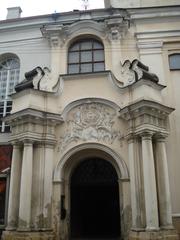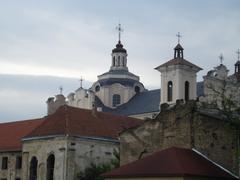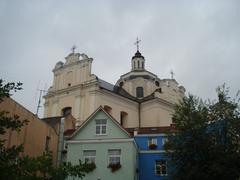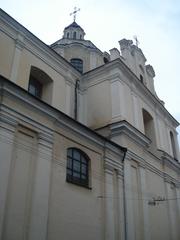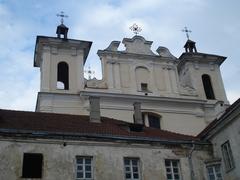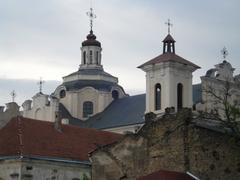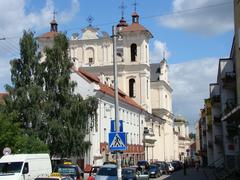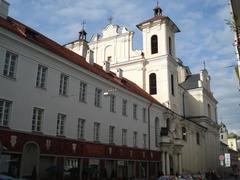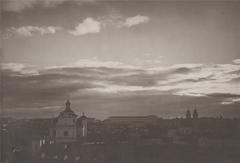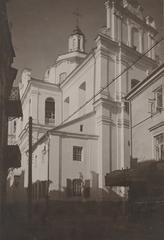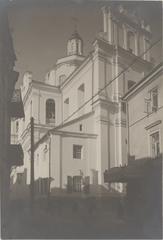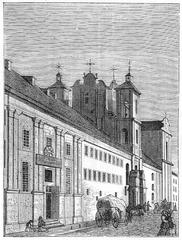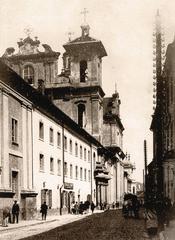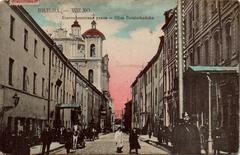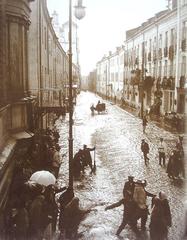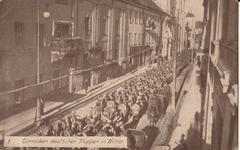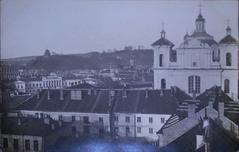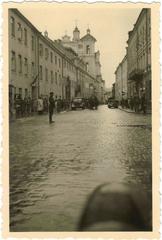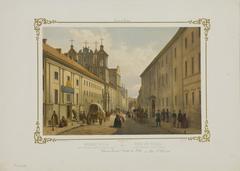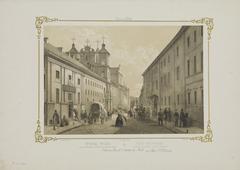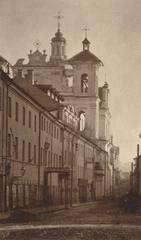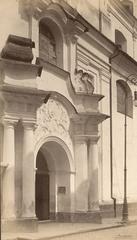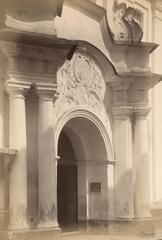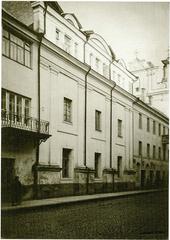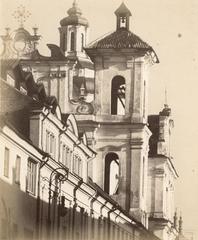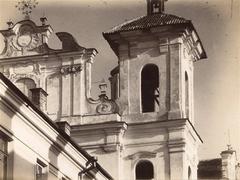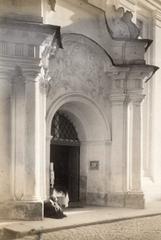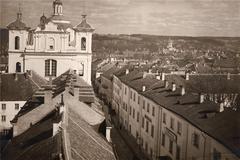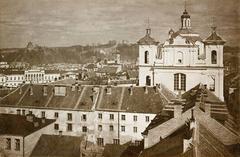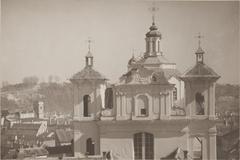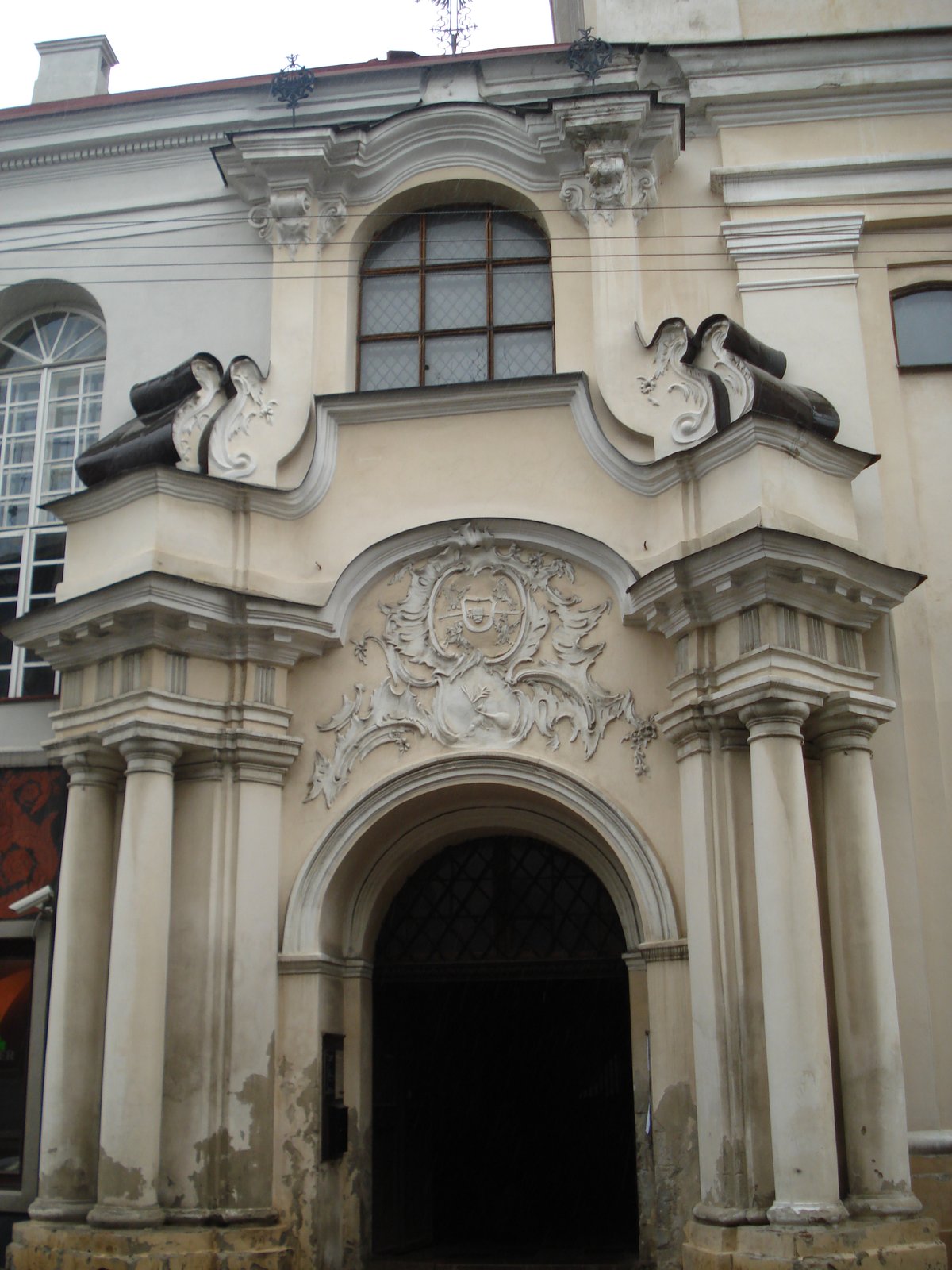
Dominican Church of the Holy Spirit Vilnius: Visiting Hours, Tickets, and Historical Guide
Date: 14/06/2025
Introduction
Nestled in Vilnius Old Town, the Dominican Church of the Holy Spirit (Šv. Dvasios bažnyčia) stands as a beacon of Lithuania’s Catholic heritage and architectural splendor. Dating back to the 14th century, it is renowned for its evolving Gothic, Baroque, and Rococo styles, making it a landmark for history enthusiasts, architecture admirers, and spiritual seekers alike. This guide provides a comprehensive overview of the church’s origins, significance, architectural highlights, practical visitor information, and tips to enhance your experience.
For up-to-date information, consult resources like Govilnius and Live the World.
Table of Contents
- Early Foundations and Historical Milestones
- Architectural Evolution: Gothic to Baroque and Rococo
- Cultural & Spiritual Significance
- Papal Connections and Divine Mercy
- Visiting Hours, Tickets, and Accessibility
- Artistic Highlights & Crypts
- Role in Vilnius’s Religious Landscape
- Practical Travel Tips & Nearby Attractions
- Frequently Asked Questions (FAQ)
- Summary & Call to Action
- References
Early Foundations and Historical Milestones
The church’s origins trace to the early 14th century. A wooden sanctuary, built as early as 1321, served the Dominican monks introduced during Grand Duke Gediminas’s reign (discover-country.com). In 1408, the Dominicans constructed a more permanent stone church, marking the site’s enduring religious role (govilnius.lt). Over the centuries, the church survived wars, fires, and political upheavals, being rebuilt repeatedly as a symbol of the city’s resilience (wikipedia).
Architectural Evolution: Gothic to Baroque and Rococo
The original stone church featured Gothic elements, but after an 18th-century fire, it was rebuilt in the high Baroque style, with Rococo flourishes (alltrips.net). The striking cupola, pilasters, and a harmonious facade balance robust Baroque symmetry with lighter Rococo motifs (Walkable Vilnius).
Inside, a traditional Latin cross plan accommodates sixteen richly adorned altars, polychrome statues, and 45 paintings. The sanctuary’s centerpiece is the multi-figural fresco “Apotheosis of the Holy Spirit” in the cupola, exuding dynamic movement and spiritual elevation (livetheworld.com). The organ, built by Adam Gottlob Casparini, is celebrated for both sound and ornate casing (govilnius.lt).
Cultural & Spiritual Significance
The church is a focal point for Vilnius’s Polish-speaking Catholic community. It has played a continuous role in worship, education, and charity since the early 15th century, especially after being transferred to the Dominicans in 1501 (cityofmercy.lt). Sixteen altars allow for multiple simultaneous Masses, a unique feature in the region. The church’s liturgical calendar, daily services, and community traditions keep its spiritual heritage alive (govilnius.lt).
Papal Connections and Divine Mercy
A defining modern event was Pope John Paul II’s visit in 1993, during which an altar was dedicated to him, incorporating a relic with his blood (govilnius.lt).
From 1986 to 2005, the church housed the original Divine Mercy painting by Eugeniusz Kazimirowski, commissioned under the guidance of Saint Faustina. Today, a faithful copy remains on display, and the church remains a popular pilgrimage site on Vilnius’s “Way of Mercy” route (ourladyofsiluva.org; cityofmercy.lt).
Visiting Hours, Tickets, and Accessibility
- Hours: Monday–Saturday 10:00–18:00; Sunday 9:00–19:00. Hours may vary on holidays—check the official site for updates.
- Tickets: Entry is free; donations are appreciated. Special events or guided crypt tours may require advance booking and a fee.
- Accessibility: The church is mostly wheelchair accessible; however, the crypts and some side chapels have limited access. Staff are available to assist if notified in advance.
Artistic Highlights & Crypts
Baroque Interior: Over sixteen altars feature gilded ornamentation, polychrome statues, and religious paintings. The main altar, dedicated to the Holy Spirit, is known for its dramatic depiction of Pentecost.
Frescoes: The cupola fresco “Apotheosis of the Holy Spirit” and other mural paintings throughout the church illustrate biblical events and saints’ lives (Walkable Vilnius). Rococo details—cherubs, garlands, and expressive stucco—enrich the visual experience.
Organ: The 18th-century Casparini organ is both a visual and acoustic masterpiece, central to concerts and liturgical music (Lonely Planet).
Crypts: Guided tours occasionally offer access to extensive burial chambers, home to hundreds of mummified remains from the 17th–18th centuries, including city notables, clergy, and plague victims. These crypts add a unique historical dimension to any visit (Atlas Obscura).
Role in Vilnius’s Religious Landscape
Located in Vilnius Old Town, a UNESCO World Heritage site, the church is part of a constellation of historic religious monuments, including the Gate of Dawn and Vilnius Cathedral. Its six centuries of spiritual activity underscore its ongoing role as a living heritage site and a center for religious, cultural, and academic communities (cityofmercy.lt; govilnius.lt).
Practical Travel Tips & Nearby Attractions
- Dress Code: Modest dress is required—shoulders and knees covered, hats removed.
- Photography: Allowed without flash or tripods, especially outside of services.
- Best Times to Visit: Weekday mornings for tranquility; Sunday Mass for vibrant community atmosphere.
- Location: Dominikonų g. 8, Vilnius Old Town. Reachable by foot, public transport, or taxi. Parking is limited in the Old Town.
- Nearby Sites: Vilnius Cathedral, Shrine of Divine Mercy, Vilnius University, and the Presidential Palace are all within walking distance (Go Vilnius).
Frequently Asked Questions (FAQ)
What are the visiting hours?
Monday–Saturday: 10:00–18:00; Sunday: 9:00–19:00. Times may vary on holidays (govilnius.lt).
Is there an entry fee?
Entry is free; donations are welcomed.
Are guided tours available?
Yes, tours can be booked through local operators or the parish office, in several languages.
Is the church accessible for visitors with disabilities?
The main sanctuary is accessible; some crypts and side chapels may not be.
Can I take photographs inside?
Yes, respectfully and without flash, particularly outside of services.
Summary & Call to Action
The Dominican Church of the Holy Spirit is a living testament to Lithuania’s enduring Catholic tradition and artistic excellence. From its medieval origins to Baroque glory, it remains a spiritual, cultural, and architectural jewel at the heart of Vilnius. With free entry, guided tours, and a central location, this church is a must-visit for anyone exploring Vilnius’s historical sites.
Enhance your experience by:
- Attending Mass or a concert,
- Booking a guided tour for deeper insight,
- Exploring nearby attractions in Vilnius Old Town,
- Downloading the Audiala app for audio guides and updates,
- Following local resources and social media for news on special events.
References
- Visiting the Dominican Church of the Holy Spirit in Vilnius: History, Tickets, and Travel Tips, Discover Country
- Dominican Church of the Holy Spirit in Vilnius: Architectural Highlights, Live the World
- Vilnius Tourism: Hours, Tickets, and Visitor Guide
- City of Mercy: History, Culture, and Practical Information
- Dominican Church of the Holy Spirit, Wikipedia
- Our Lady of Siluva: Divine Mercy Shrine
- Atlas Obscura: Holy Spirit Church Vilnius
- Walkable Vilnius: Church of the Holy Spirit
